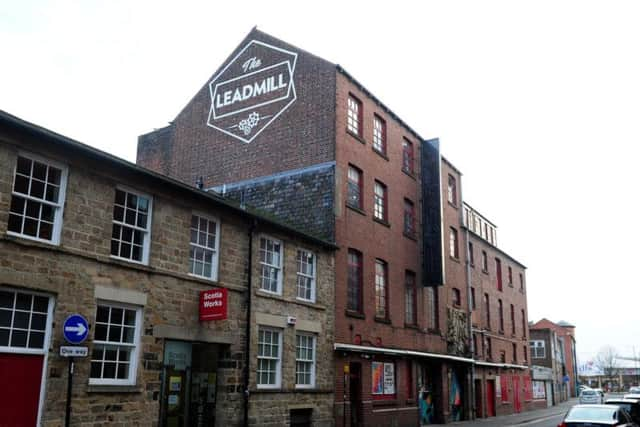The sounds of Sheffield's post-punk music scene are captured in this CD box set


However, a new four-CD box set, released via Cherry Red Records shines a light on some artists that, whilst not as much of a household name, have been key contributing figures in Sheffield’s alternative and underground music scenes. Spanning 1977-1988, Dreams to Fill the Vacuum features punk and post-punk bands such as 2.3, Artery, I’m So Hollow, the Prams and They Must be Russians, and as it moves into the Eighties it covers a mix of indie, electronic, goth, alternative and other esoteric sounds emanating from the city. Such names include Clock DVA, the Midnight Choir, Ipso Facto, Vendino Pact, British Electronic Foundation and New Model Soldier. Jake Harries, of the industrial punk-funk band Chakk, moved to the city after he fell in love with the strange electronic sounds he heard on John Peel’s radio show in the late 1970s. “I arrived and found a lot of concrete, industrial buildings and extremely friendly people,” he recalls. “It was grey and it rained, but the people were warm. This rather brutalist-looking city was in fact extremely friendly and a great place to be in a band. It was cheap to live in too.
Advertisement
Hide AdAdvertisement
Hide Ad“It seemed that almost every pub put bands on. There were young people starting theatre companies, design companies, writing novels, making short films – the place was bursting with creative energy.” This period exploded so ferociously musically that Martin Lacey, of They Must Be Russians, goes as far to say: “Sheffield invented post-punk. Between 1977 and 1981 there was an extraordinary vein of innovation, experimentation and creativity which nurtured some of the greatest pop music ever made.” The 1980s were a tough time for Sheffield in many ways but amid the turmoil there was a creative network and a number of artists flourishing underneath it all. Nigel Humberstone, of In the Nursery – an electronic neoclassical outfit he performs in with his twin brother Klive – recalls musicians utilising the industrial decline in the city for creative gain. “There was a multitude of bands tinkering away in various rundown buildings scattered around the city centre,” he says. “Everyone was doing their own individual alternative thing. Hula were set up in an old building at Ponds Forge, the Anti Group headquarters was in a little mesters off Cambridge Street. In the Nursery were operating out of a basement before finding a rehearsal space above a sandwich shop.” Dirt cheap bus fares is something many cite as being key during this era, with the freedom of movement often resulting in the fruits of collaboration.


“There were so many people in various bands who I later ended up in bands with,” says Richard Hawley, who appears on the compilation via his teenage indie band Treebound Story. He also recalls it as a time when a great amount of creativity was plucked from a “just get on with it” attitude. “It was actually amazing that so much came out of that era because it was all do it yourself,” Hawley says. “There’s always been a spirit of people in Sheffield thinking ‘well, London is ignoring us so we’ll just do it ourselves’. Despite a huge amount of success from a lot of bands, that attitude still exists.” A central hub that arrived midway through the 1980s was a recording studio (later a shop that also had connections to the founding of Warp Records) called FON. When Chakk signed with a MCA, they managed to convince the label to let them build their own studio rather than go to London and spend time in expensive ones.“It made sense as it would have been less expensive than recording it in London,” Harries says. “So the argument we persuaded them on was financial. It was unheard of for companies to finance a band’s recording studio, and I don’t think it has happened ever again in the same way.” The decision was also rooted in the political times. “The country seemed divided between the South and the North,” he recalls. “So we wanted to bring some money here. Plus, we thought there was more interesting music happening in the North and it seemed quite natural to stay here.”
Advertisement
Hide AdAdvertisement
Hide AdThe result was a key development in Sheffield music during the era. Many of the bands on the compilation recorded here such as In the Nursery, Treebound Story, Hula and Pulp. Some suggested it created a sense of unity during a time of national division. “I think we were all feeding off each other creatively,” says Nigel Humberstone. “We felt part of a vibrant local, national and international music scene. FON studios connected with a lot of people and inspired a great deal of creativity.” Martyn Ware, of Heaven 17 and early Human League, left Sheffield in the early 1980s, although as a major Sheffield Wednesday fan he is back in the city constantly. He looks back on some of the music produced from this era with a great deal of fondness. “There always seemed to be something very daring about the bands coming from Sheffield,” he says. “I’m very proud of my city and what we achieved from a very poor background.”
Dreams to Fill the Vacuum – The Sounds of Sheffield 1978-1988 is out now.